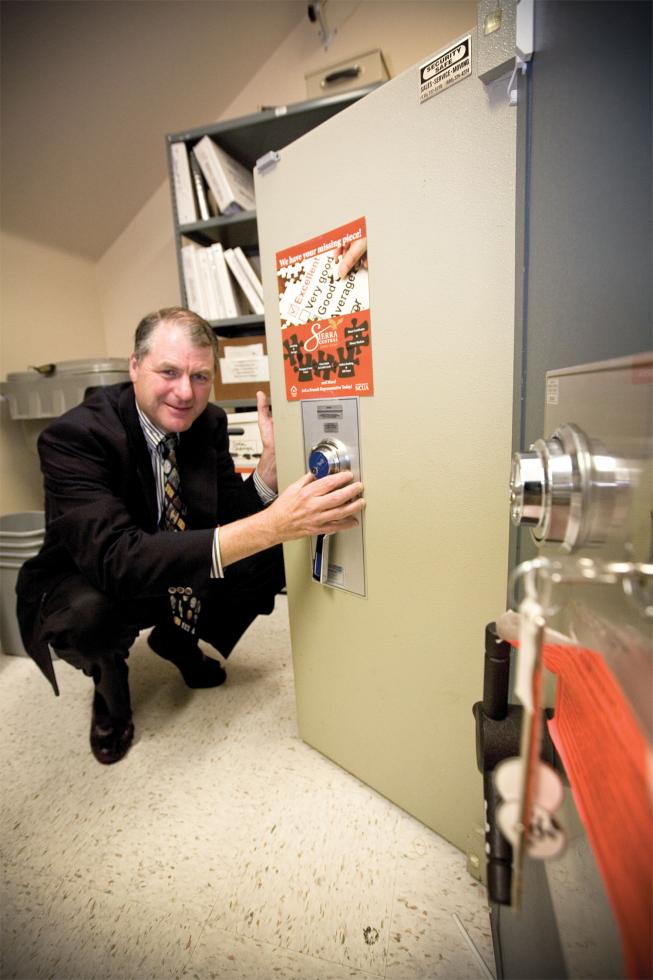John Cassidy, president and CEO, Sierra Central Credit Union

If lawmakers follow through on pending legislation in Washington, it could mean a boost for business for Capital Region credit unions. Because of a federally mandated lending cap, credit unions can currently lend 12.25 percent of total assets to businesses. The original Senate Bill 2919 and companion House Bill 3380 proposed raising the cap to 25 percent. In late May 2010 an amendment to the small-business bill HR 5297 called for increasing the cap to 27.5 percent of total assets.
“We’ve been a proponent of this change since 1998,” says Bob Arnould, senior vice president of government affairs for the California Credit Union League. “Prior to 1998 there was no cap on small-business lending. There’s an economic situation now where banks are not lending, and it is the right time to raise the cap.” According to the California Credit Union League, increasing the cap could add $2 billion in additional investment in California.
Patsy Van Ouwerkerk, president and CEO of Travis Credit Union in Vacaville, says if the legislation passes, it would infuse much-needed capital into the economy, promoting job creation and economic growth. “At a time when small businesses are finding it increasingly difficult to obtain credit from banks, Congress should enable credit unions to help,” Van Ouwerkerk says.
Travis Credit Union has been making small-business loans for the past several years, and currently the credit union has 8.19 percent of its assets in member business loans, which is roughly 67 percent of the current cap. Van Ouwerkerk expects requests for small-business loans to grow. “Based upon the current trends, we will probably exceed the cap within the next few years,” she says. “Appropriate action by Congress to increase the cap to 27.5 percent will allow Travis Credit Union along with other credit unions across the nation to continue to issue loans without interruption.”
The proposal to increase the lending cap does have some critics, namely banks. The American Bankers Association is opposed to the pending legislation. “Eliminating the congressionally mandated business lending cap and expanding credit unions’ already broad authority would result in credit unions straying further from their traditional mission of serving consumers, especially those of modest means,” says John Hall, a spokesperson for the Washington D.C.-based ABA.
In addition, Hall says, business lending is more risky than loaning money to individuals. “The restrictions Congress placed on the ability of credit unions to make business loans reflects the reality that business lending poses greater risks than secured lending to individuals,” he says. “Hence, removing the business lending cap will only increase the risk of exposure of credit unions.”
Proponents of the legislative change agree that making loans has inherent risk. However, they say, expanded business lending would not necessarily pose a safety and soundness concern. Gordon Dames, the former CEO of Mountain America Credit Union in Utah, was a principal examiner for the National Credit Union Administration for 12 years. He says strong underwriting is essential: “If the underwriting is good, you minimize risk.”
Teresa Halleck, former president and CEO of Golden 1 Credit Union, says good management oversight of the portfolio is key in reducing risks. “Credit unions who offer business lending services must have the expertise to do so, just as they are required to have the pertinent expertise required to offer other lending products,” she says. “A prudent and well-managed member business loan program offers loan portfolio diversification and simply shifts risk to another category without adding undue risk or additional loss exposure.”
Additionally, those in favor of increasing the cap say the U.S. Treasury Department and the National Credit Union Administration have recommended amendments to business lending rules that would mitigate the risks associated with increasing the cap. For example, a credit union would have to be well capitalized to increase member business lending to 27.5 percent of assets, and it would need at least five years experience in underwriting business loans. In addition, the credit union would only be permitted to lend an increase of 30 percent annually in its business lending portfolio. “The correct safeguards are in the amendment to protect soundness and safety,” Arnould says.
The ABA argues that the primary beneficiaries of the proposed change would be large, growth-oriented credit unions rather than all credit unions. Hall says that nationwide, “only 37 of the nearly 7,600 credit unions, or about one-half of 1 percent of all credit unions, would directly benefit from the increased business lending authority since only these 37 are at or within 1 percent of the current business lending cap. … Therefore, raising the cap would have very little impact on lending to businesses.”
Economic development consultant Tim Johnson says that, historically, credit unions haven’t played a very large role in business lending in California. However, according to Johnson, the Small Business Administration is looking at doing more microlending and is having trouble finding partners. “There may be an opportunity for credit unions,” he says.
Credit unions in the Sacramento area doing few small-business loans say they would like to lend more to small businesses, and increasing the cap will help them do so. Paul Rigdon, vice president of lending at SAFE Credit Union, says raising the cap would allow smaller credit unions to become more serious about business lending. “The current cap makes it difficult to commit to building the infrastructure required to really develop our business lending platform because we will not be able to fully utilize the infrastructure once we start bumping against the cap,” he says. “The current cap doesn’t give us enough room and would be reached quickly if we built the right infrastructure.” Rigdon adds that SAFE is still well under the cap because it is fairly new to the market; the credit union has not built much infrastructure due to concerns about hitting the cap and being stuck with an expensive infrastructure and limited ability to lend.
Sierra Central Credit Union is in a similar position, says its president and CEO, John Cassidy. “We’re still at a limited level as far as business lending goes because the amount of business investment you need is high,” he says. With the current lending cap it doesn’t make sense for credit unions to invest in small loans, he adds, but they will be able to lend more if the cap increases.
Credit unions in the Sacramento area say raising the lending cap will help small businesses. “Credit unions are in a unique position to help small businesses get through tough times,” says Cassidy, who spent 20 years in the banking sector. He recognizes that banks are opposed to the legislation, but says that larger banks historically haven’t served small businesses. “The larger banks throughout the country have tightened up lending,” he adds.
Some business owners in the Capital Region say they’ve had better luck procuring loans from credit unions than from banks during the recent economic downturn. One such businessperson is Ray Goodson of The Landmark Image. After the national bank Goodson was working with turned down his loan at the regional level, he ended up getting an SBA loan from Travis Credit Union. “They were very quick to respond and got things done very quickly,” he says.
Brian Kim, founder of Med-Tech Water Systems, also turned to Travis after his bank kept throwing up hurdles. He closed on an SBA loan at the credit union in about three weeks. “It was a day-and-night difference from my traditional experience with the big bank,” Kim says.
It remains to be seen if the legislation will pass and, if so, what impact raising the member business lending cap will have on credit unions and the economy. However, regardless of whether the cap increases, credit unions may be a viable alternative to larger banks for individuals interested in expanding a business.
“As local businesses grow and expand, it is important that their financial service needs be met on a consistent long-term basis through the financial service provider of their choice,” Halleck says. “Additionally, in an economic environment where consumer lending has slowed considerably due to state furloughs and other economic impacts to the region, member business lending provides an important opportunity for loan portfolio diversity for those credit unions that seek to provide those services to our communities.”
Recommended For You

The Big Squeeze on Small Credit Unions
They may be on the verge of extinction
On a hot, sunny morning last fall, 69-year-old retiree Pamela Chappell of Citrus Heights hit rock bottom. She was scraping by on Social Security checks and a tiny pension while paying for medication to treat her lymphedema, a painful swelling in her legs. Then she got a letter from the IRS warning her that it was about to empty her savings account of $8,000 — every dollar she had — for back taxes.

Merge or Purge
Community banks contemplate consolidation as regulatory costs grow
Banks throughout the country are putting new practices in place to comply with an onset of new federal regulations prompted by the 2010 Dodd-Frank Wall Street Reform and Consumer Protection Act and other post-meltdown rule changes. Those expensive efforts are sparking major changes and concerns for some of the Capital Region’s smaller lenders.


